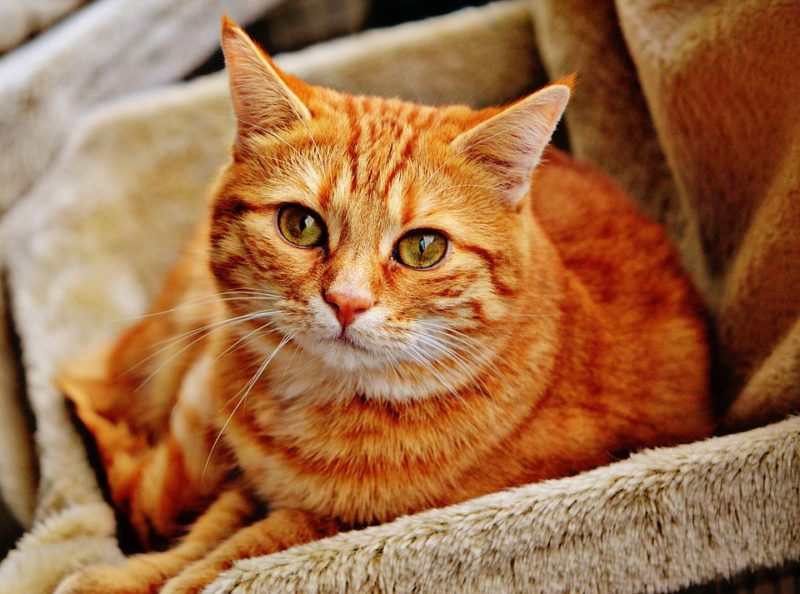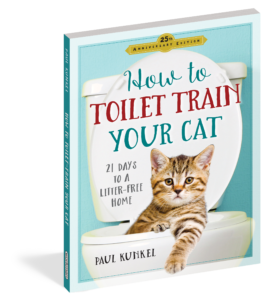Excerpted from Paul Kunkel’s How to Toilet Train Your Cat.

Legally, manufacturers that sell products meant for use by animals are not required to publish the same health and safety data that the Food and Drug Administration requires for products intended for human consumption. Therefore, it’s unlikely that we’ll ever know the true effect of cat litter on feline health.
Faced with hundreds of brightly wrapped products packed full of promises each making miraculous claims, most cat owners assume (or at least hope) that phrases like “safety tested by independent laboratories” means that the product is “safe.” Yet researchers and veterinarians specializing in the science of immunotoxicology—the long-term effects of exposure to low-grade toxins, poisons, and environmental pollutants—believe many common substances can slowly undermine a cat’s urinary, nervous, and immune systems when potent dosages are administered in tiny amounts over a long period of time.
“As the cat’s condition worsens,” notes Debra Pirotin, a retired veterinarian and author of No Naughty Cats, “it is sometimes difficult to see that the cat is really ill. Often the only indications of systemic poisoning are gradual weight loss with secretions from the eye and nose and general listlessness.” With their defenses impaired, many cats quickly succumb to the first opportunistic infection, says Dr. Pirotin. These include FCV (feline calicivirus) and FVR (feline viral rhinotracheitis), viruses that were once rare but are now quite common.
The role of chemical contamination in this situation is still uncertain. Nonetheless, cat owners have begun to turn away from chemically treated litter, leading to the rise of nontoxic, organic, and natural litters. One way to avoid litter? Toilet train your cat.
 About the Book:
About the Book:
Follow this foolproof 21-day program and you can teach any litter-trained cat to use a toilet instead of a box.
Discover a better way: Now cat owners everywhere can put down their scoops, stop ferrying backbreaking sacks of litter, enjoy a fresh-smelling home, and save hundreds of dollars a year. And make their cats happier, too!
The requirements are simple: magazines or newspapers, masking tape, heavy-duty plastic wrap, a supply of litter, and a cat between the ages of six months and ten years (you can train an older cat, but it may take longer). Then, 21 days later, your cat will be using the toilet, just like any other civilized member of the family. For life.
Toilet training a cat isn’t just for the owner’s convenience. Many cats equate the smell of the litter box with danger, causing constant stress, and the fragrances, dyes, and disinfectants found in most litters are detrimental to your pet’s well-being. Yes, it’s true: A toilet-trained cat is a happier, healthier cat.
Buy the Book
Amazon | B&N | Indiebound | Workman





No Comments